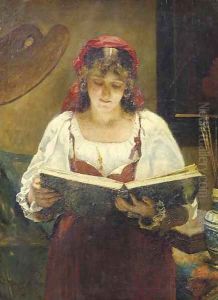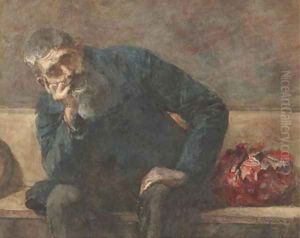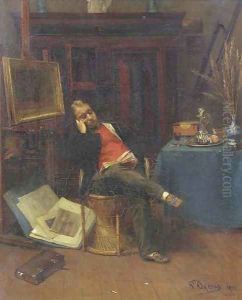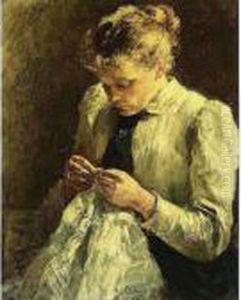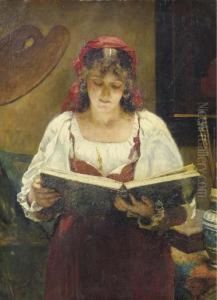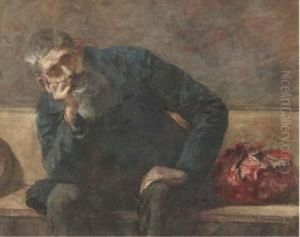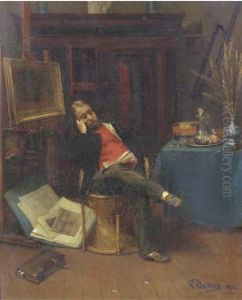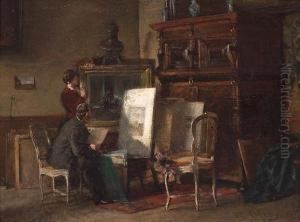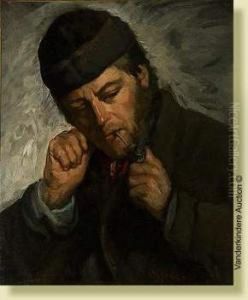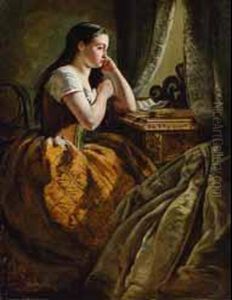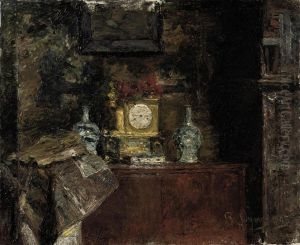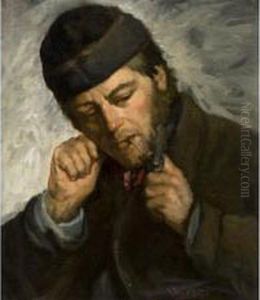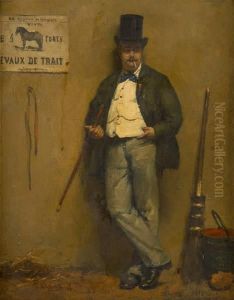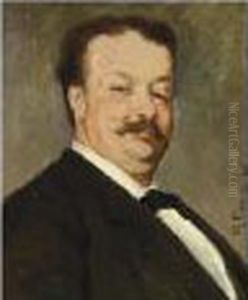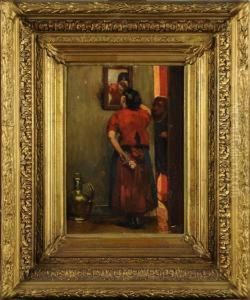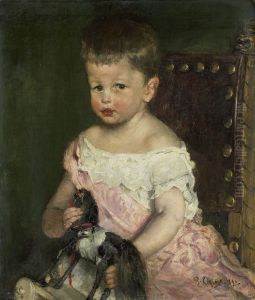Pieter Oyens Paintings
Pieter Oyens was a distinguished Dutch painter, born in 1842 in The Hague, Netherlands. Alongside his twin brother David Oyens, he became a notable figure in the European art scene of the 19th century. Pieter's artistic journey began under the guidance of his father, who was an amateur artist himself, and this early exposure to art profoundly influenced both brothers. They further honed their skills at the Royal Academy of Art in The Hague before moving to Brussels, where they spent the majority of their careers.
Pieter Oyens's work is often characterized by its vibrant realism, with a particular focus on genre scenes, portraits, and still lifes. His paintings vividly capture the bourgeois life of his time, imbued with a sense of warmth and domesticity. Unlike his brother David, who also ventured into more impressionistic styles, Pieter remained largely faithful to the detailed and realistic depiction of his subjects.
The twins were well-received in their adopted home of Belgium, becoming integral members of the artistic community. Pieter, in particular, was known for his ability to infuse his paintings with a narrative quality, often portraying scenes of artists at work, social gatherings, and intimate family moments with a meticulous attention to detail and a rich palette.
Despite his success, Pieter Oyens's life was marked by tragedy. His health began to decline in the late 1880s, leading to his premature death in 1894 at the age of 52. His passing was deeply felt in the artistic communities of both the Netherlands and Belgium, where he and his brother had made significant contributions.
Today, Pieter Oyens's works are celebrated for their technical mastery and emotional depth. They are housed in various prestigious collections and museums across Europe, serving as a testament to his enduring legacy in the world of 19th-century art.
